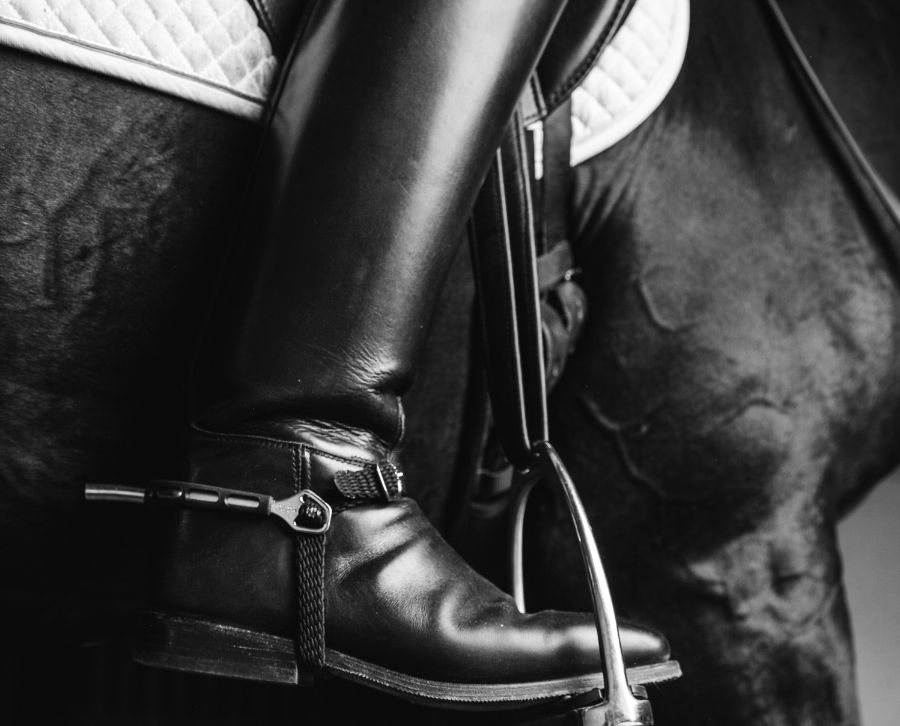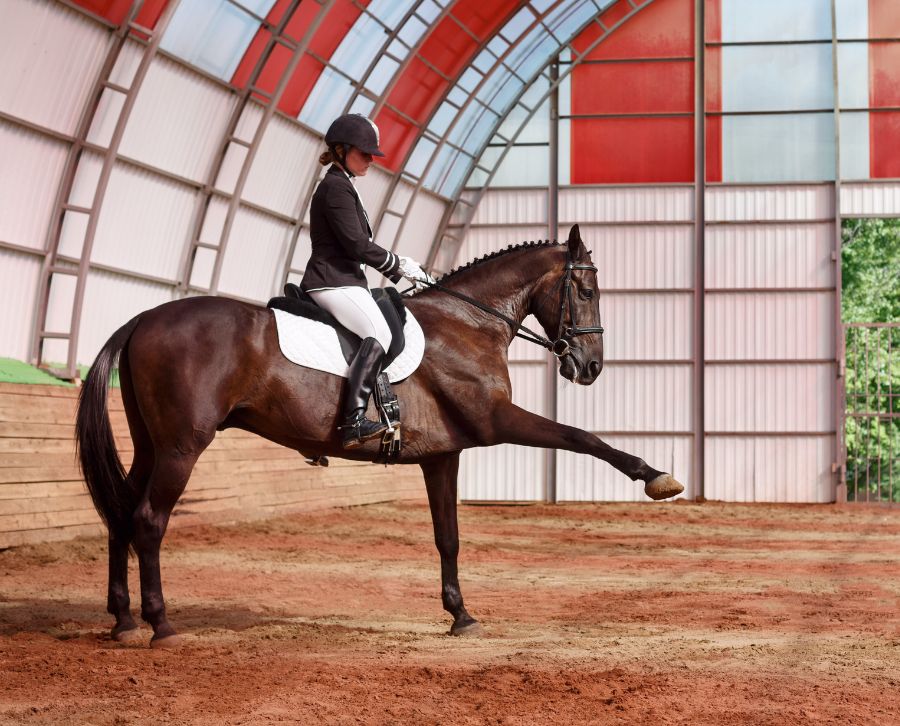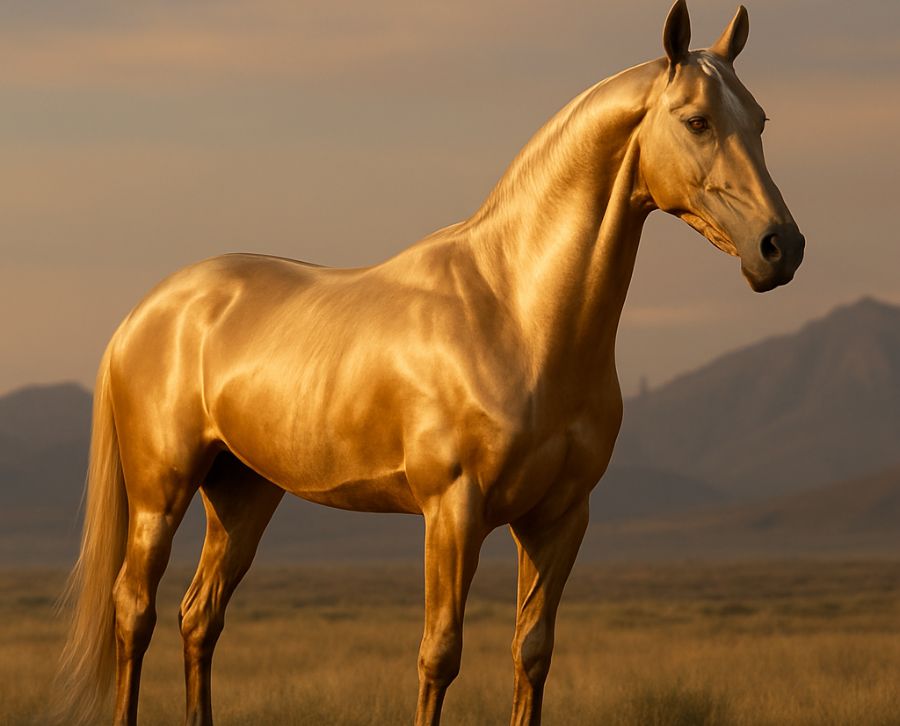Horse spurs are one of the most functional tools in horse riding and the most used to give orders and instructions to the animal. are you interested in knowing more about this tool? At Equspaddock, as experts in the manufacture of equipment for this sport, we explain everything in detail.
Find out what they are, what types there are, how they are used, what they are for and why they are so important. In this article you can learn much more from true equine lovers!

What are spurs?
If we talk about what a horse spur is, it is a riding tool that is hooked on the rider’s boot and allows him to give instructions and commands to the horse. For example, with movements and by exerting a small pressure on the horse’s flanks, you can ask the animal to accelerate, change direction, brake, etcetera.
However, this instrument should be used sparingly and only when the horse is used to it. Moreover, they are not indispensable for riding, in fact, many riders do not even use them.
As for the parts that make up a spur, they are: a heel band, which allows to adjust it to the heel; a rowel pin, which is the part that “hits” or presses the horse; a shank, where the roulette is attached; an eyelet; which is the part that joins the strap to the bow; and a strap; which allows to adjust it to the foot completely to measure.
Types of spurs and their uses
This riding tool is used by some experienced riders in this sport to improve their communication with the animal, so there are different depending on what they are used for. Therefore, some of the types of horse spurs and their uses may vary.
Spurs according to equestrian discipline and rider’s needs:
– Dressage. They are designed specifically for dressage, so they are long, thin, elegant and with a smaller cogwheel. And, above all, they allow for greater precision.
– Jumping. They are used in this discipline, and are shorter and thicker, and their sprocket is larger, thus providing greater stability.
– For learning. These are used by beginner riders who are learning, so they have wheels without teeth to avoid injury to the animal.
– Decorative. These are aesthetic, elegant and beautiful, in terms of shape and colors.
Spurs according to design:
– English. These are used in classical disciplines such as dressage or jumping, for example. They have a simple structure with a straight shaft and a toothed wheel at the end. In addition, their length can vary from 10 mm (jumping) to 30 mm (dressage).
– Vaqueras. This type of spur is more robust and larger in size. And, as its name indicates, it is usually used in cowboy practice.
– Clamp spurs. These have a clip at the tip, instead of a wheel, to press the horse’s sides. They are used mainly on young horses and by experienced riders, since they are less precise.
– Charras. They are usually made of metal and are the ones used in Mexico, hence their name. They have a fairly large and curved arch.
– Chilenas. These also have a large curved arc, have long barbs and are made of both metal and wood. They are used mainly in Chile.
– Gaucho. This type, made of metal, is used in Argentina. They are formed by a curved arch, a small slice and short spikes.
Spurs according to their material:
– Metal. It is the most used material for this equestrian tool.
– Wood. Mostly used for aesthetic spurs.
– Plastic. These are used for children or for initiation.
Spurs according to their function:
– Communication. They are used to give signals and instructions to the animal.
– Correction. They help to correct the rider’s posture on the horse.
– Safety. They are used to avoid injuries to the animal in case of a fall. For this purpose, they are made of materials that are easy to break or bend upon impact.
How to choose the right spurs
When choosing the best type of riding spurs, it is important to follow the advice of professionals in the equestrian world. It depends, above all, on the rider’s experience, needs and objectives to be achieved.
Although it is also necessary to take into account other aspects such as the discipline to be performed, the size of the horse (they must have a size proportional to the animal), the material (they will be more or less resistant and durable), the comfort and welfare of the animal.
Above all, it is very important to observe the horse’s behavior. At all times it must be comfortable and safe, and not cause any kind of harm.
Correct and safe use of spurs
How do you use spurs correctly when riding a horse? As we have commented throughout the post, it is a practical tool, but not essential. This is because, sometimes, if they are not used correctly, they can be aggressive and negative for the animal, since they can cause damage.
Therefore, when using them, it is important to be sure of what they are going to be used for and to do so in moderation. It is also important to be very clear about what size to use, always in proportion to the animal. In addition, they must always be in good condition and sharp.
It is important to learn how to use this tool correctly with a riding instructor to prevent the horse from feeling uncomfortable. Otherwise, the rider-horse relationship may be affected. If used properly, they are an ideal option to improve communication between the pair in different competitions.
Have fun together with your animal in a more accurate way!





